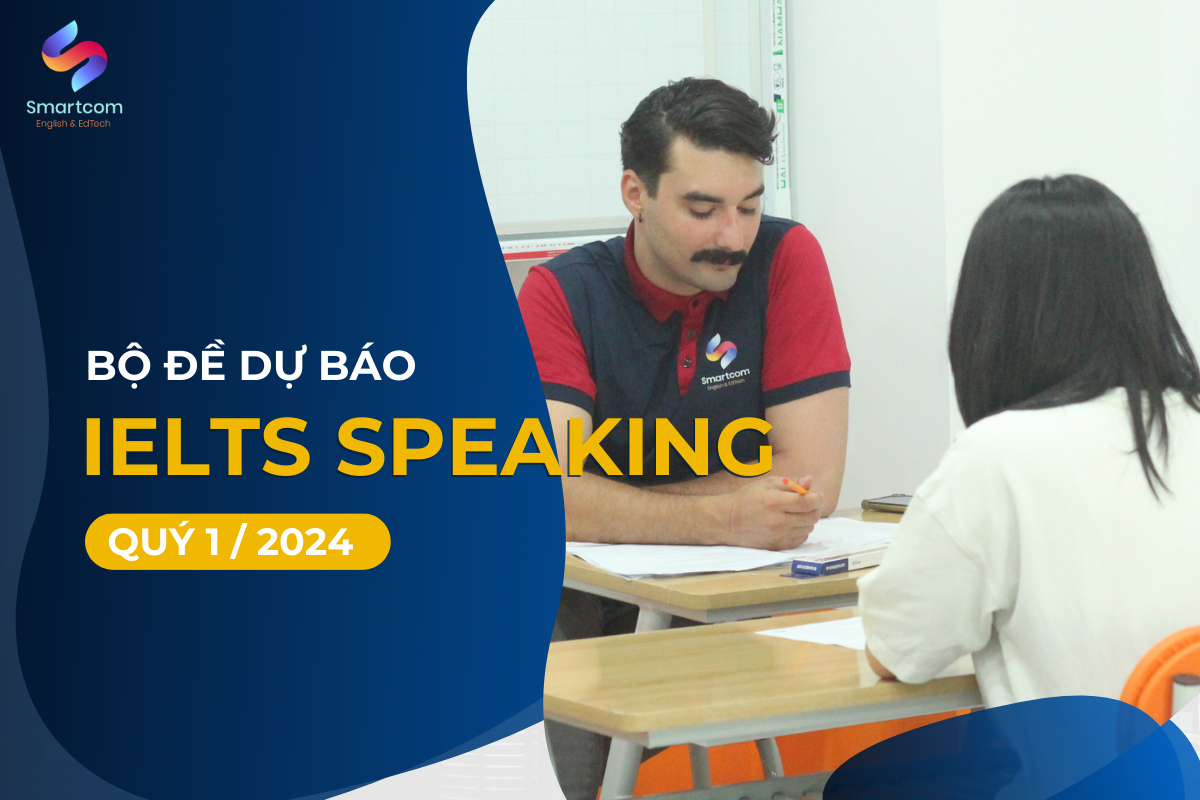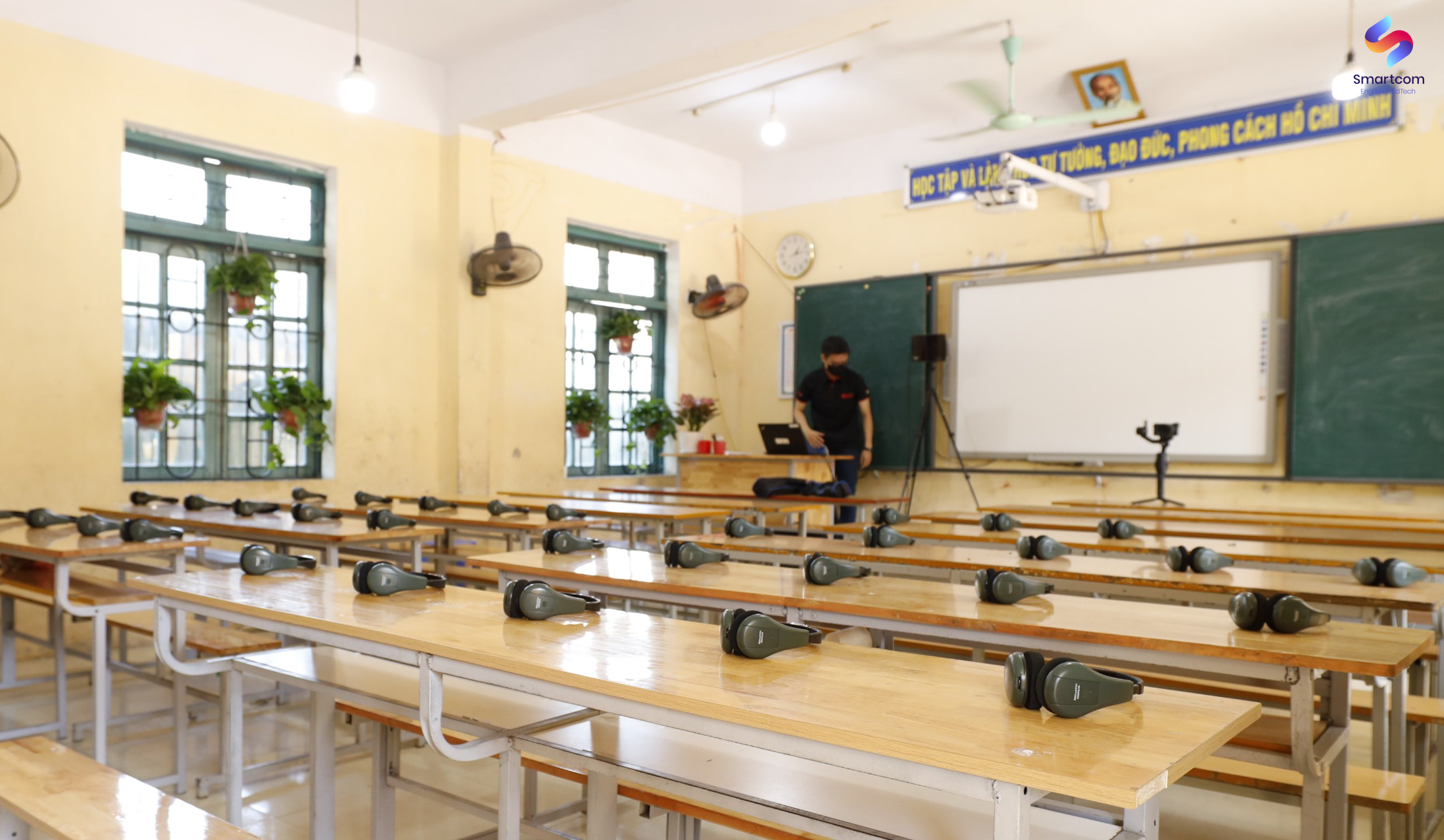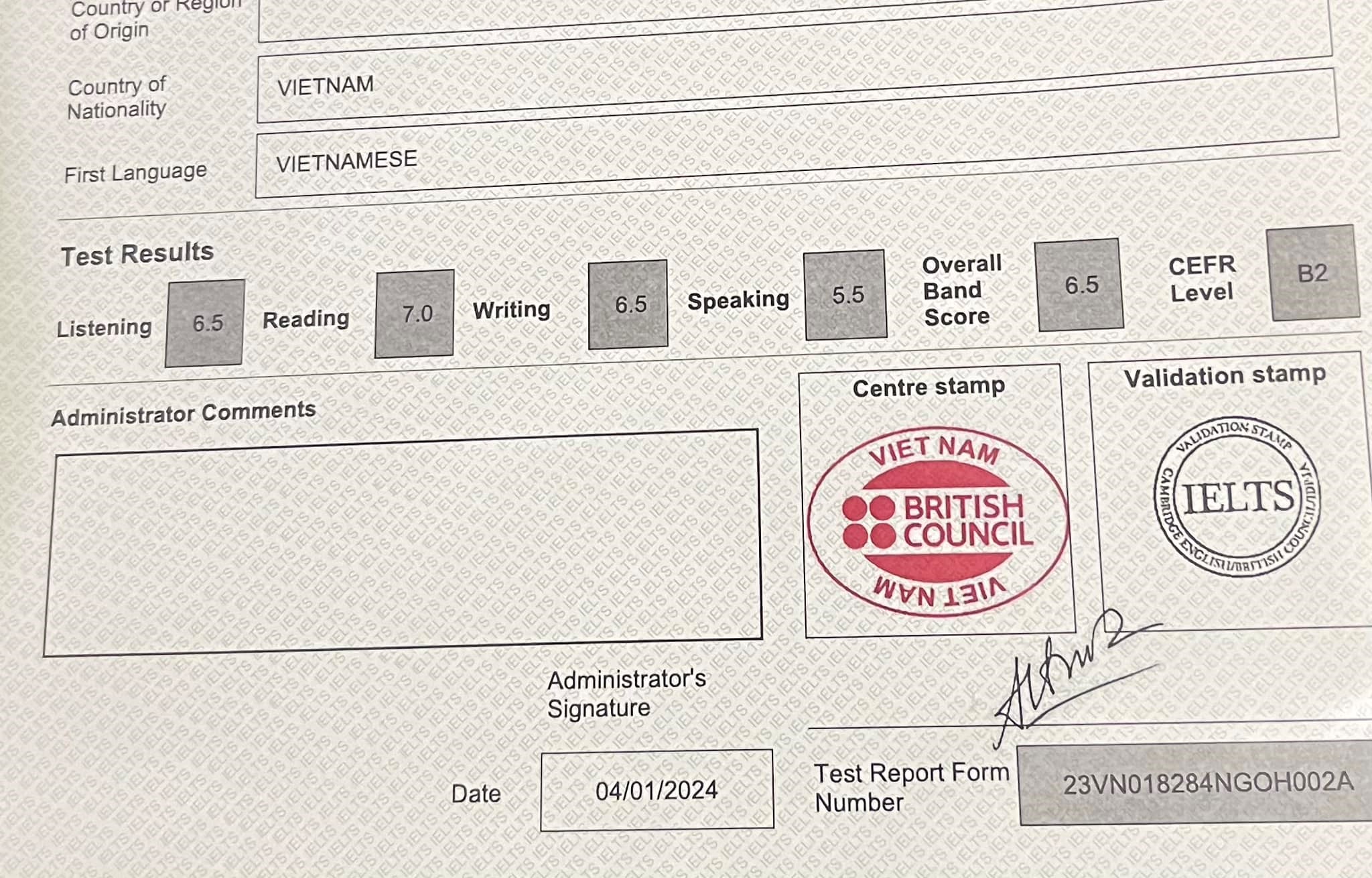Cách làm bài Matching Heading trong IELTS Reading
Matching Heading (nối tiêu đề) vốn được coi là dạng câu hỏi khó nhằn trong các bài IELTS Reading. Trong bài viết này, Smartcom English sẽ gợi ý giúp bạn tối ưu thời gian và điểm số qua 2 cách làm bài Matching Heading trong IELTS chính xác nhất nhé.
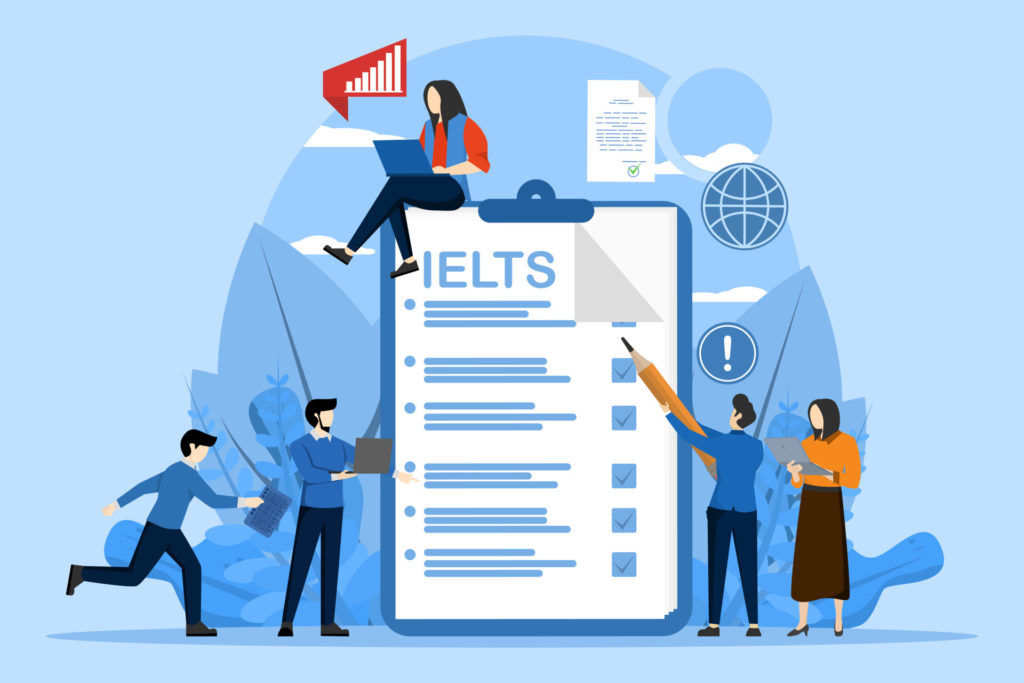
Dạng bài Matching Heading và khó khăn thường gặp
Dạng câu hỏi Matching Heading nhằm giúp kiểm tra khả năng nắm bắt nội dung chính của các đoạn văn trong bài đọc. Đề thi sẽ cho trước một list các câu tiêu đề và nhiệm vụ của thí sinh là quyết định xem câu tiêu đề đó ứng với đoạn văn nào. Tất nhiên, số lượng câu tiêu đề sẽ nhiều hơn số đoạn văn trong bài.
Thông thường, nhiều thí sinh không thích dạng câu hỏi này là bởi:
- Một số tiêu đề có nhiều điểm tương đồng và khó đưa ra lựa chọn dẫn tới mất thời gian phân vân.
- Mất nhiều thời gian để nắm bắt nội dung chính của cả đoạn.
- Có những tiêu đề đúng với nội dung đoạn văn nhưng chỉ mang một ý chi tiết cũng dễ gây nhầm lẫn với nhiều thí sinh.
- Tiêu đề có chứa từ đồng nghĩa trong đoạn văn nhưng nghĩa không khớp cũng dễ đánh lừa thí sinh.
Cách làm dạng bài Matching Heading
Dù không phải là một dạng bài quá phức tạp nhưng nếu không có một chiến thuật làm bài và kỹ năng hợp lý, thí sinh sẽ rất dễ bị mất thời gian mà vẫn bị đánh lừa với những câu hỏi này. Dưới đây là hai cách làm bài Matching Heading mà các bạn có thể tham khảo.
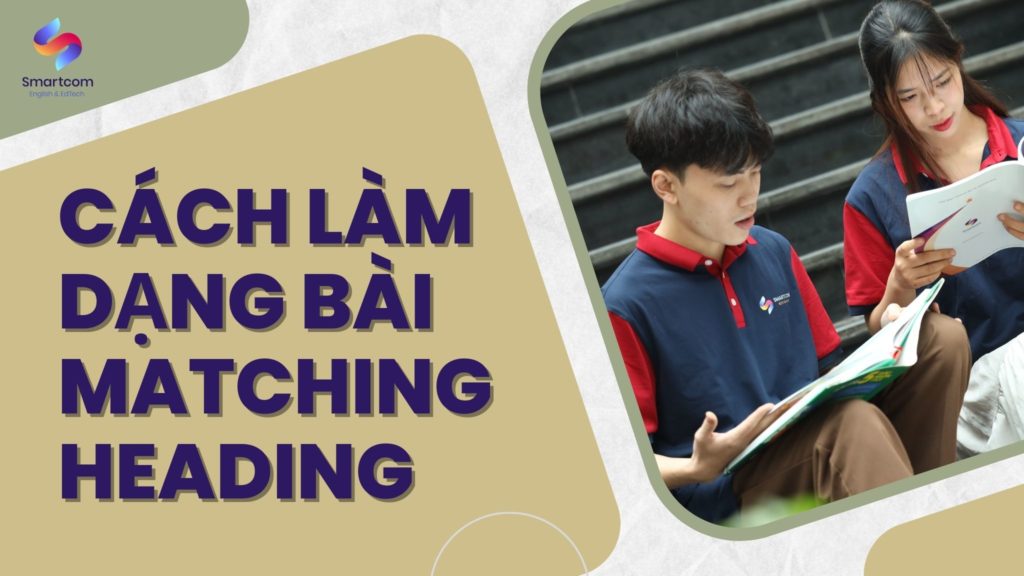
Cách 1: Bắt đầu từ câu hỏi
Đây được coi là một cách làm phổ biến. Đã được nhiều thí sinh áp dụng và đem lại hiệu quả.
- Trước tiên, hãy đọc kỹ, lần lượt và hiểu nghĩa của từng tiêu đề được cho trước.
- Gạch chân các từ khoá trong các tiêu đề. 2. Khoanh tròn các từ khóa trong câu tiêu đề như: các danh từ, tên riêng của người hoặc các địa danh,… Bước này sẽ giúp các bạn dễ tìm lại và xác định tiêu đề ở những bước sau.
- Ghi chú lại điểm tương đồng/khác biệt giữa các câu tiêu đề.
- Bạn nên skim và scan qua nội dung của các đoạn văn. Ngoài ra, câu đầu và câu cuối cũng rất quan trọng và thường mang nội dung chính của đoạn văn.
- Hãy chọn ra tiêu đề PHÙ HỢP NHẤT. Đôi khi câu tiêu đề có thể chứa một số từ ngữ khớp với văn bản, tuy nhiên tiêu đề cần phải mang ý chính, bao quát cả đoạn văn. Sau khi đọc một lượt tất cả tiêu đề, hãy chọn ra câu có nghĩa gần giống với nội dung đoạn văn nhất.
Cách 2: Bắt đầu từ bài đọc
- Đọc lần lượt từng đoạn văn bản: Bạn có thể bắt đầu từ việc đọc qua một lượt các đoạn văn để đánh dấu và nắm ý chính. Tuy nhiên, hãy lưu ý giới hạn thời gian và đừng quá sa đà vào mội loại câu hỏi. Hãy chú ý hơn vào câu đầu tiên và câu cuối cùng cố gắng xác định ý chính cả đoạn.
- Ghi chú lại tiêu đề theo ý hiểu của bạn.
- Đọc tất cả tiêu đề cho sẵn, đánh dấu keyword và xác định xem tiêu đề này phù hợp với đoạn văn nào.
Bài tập Matching Heading có đáp án
Hãy cùng thử áp dụng những chiến thuật trên vào bài tập dưới đây nhé!
William Gilbert and Magnetism
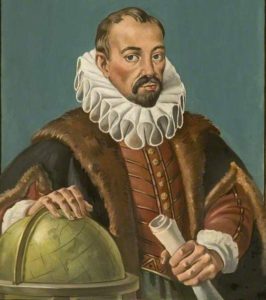
A
The 16th and 17th centuries saw two great pioneers of modern science: Galileo and Gilbert. The impact of their findings is eminent. Gilbert was the first modern scientist, also the accredited father of the science of electricity and magnetism, an Englishman of learning and a physician at the court of Elizabeth. Prior to him, all that was known of electricity and magnetism was what the ancients knew, nothing more than that the lodestone possessed magnetic properties and that amber and jet, when rubbed, would attract bits of paper or other substances of small specific gravity. However, he is less well known than he deserves.
B
Gilbert’s birth pre-dated Galileo. Born in an eminent local family in Colchester County in the UK, on May 24, 1544, he went to grammar school, and then studied medicine at St John’s College, Cambridge, graduating in 1573. Later he travelled in the continent and eventually settled down in London.
C
He was a very successful and eminent doctor. All this culminated in his election to the president of the Royal Science Society. He was also appointed personal physician to the Queen (Elizabeth I), and later knighted by the Queen. He faithfully served her until her death. However, he didn’t outlive the Queen for long and died on November 30, 1603, only a few months after his appointment as personal physician to King James.
D
Gilbert was first interested in chemistry but later changed his focus due to the large portion of mysticism of alchemy involved (such as the transmutation of metal). He gradually developed his interest in physics after the great minds of the ancient, particularly about the knowledge the ancient Greeks had about lodestones, strange minerals with the power to attract iron. In the meantime, Britain became a major seafaring nation in 1588 when the Spanish Armada was defeated, opening the way to British settlement of America. British ships depended on the magnetic compass, yet no one understood why it worked. Did the Pole Star attract it, as Columbus once speculated; or was there a magnetic mountain at the pole, as described in Odyssey, which ships would never approach, because the sailors thought its pull would yank out all their iron nails and fittings? For nearly 20 years, William Gilbert conducted ingenious experiments to understand magnetism. His works include On the Magnet, Magnetic Bodies, and the Great Magnet of the Earth.
E
Gilbert’s discovery was so important to modern physics. He investigated the nature of magnetism and electricity. He even coined the word “electric”. Though the early beliefs of magnetism were also largely entangled with superstitions such as that rubbing garlic on lodestone can neutralise its magnetism, one example being that sailors even believed the smell of garlic would even interfere with the action of compass, which is why helmsmen were forbidden to eat it near a ship’s compass. Gilbert also found that metals can be magnetised by rubbing materials such as fur, plastic or the like on them. He named the ends of a magnet “north pole” and “south pole”. The magnetic poles can attract or repel, depending on polarity. In addition, however, ordinary iron is always attracted to a magnet. Though he started to study the relationship between magnetism and electricity, sadly he didn’t complete it. His research of static electricity using amber and jet only demonstrated that objects with electrical charges can work like magnets attracting small pieces of paper and stuff. It is a French guy named du Fay that discovered that there are actually two electrical charges, positive and negative.
F
He also questioned the traditional astronomical beliefs. Though a Copernican, he didn’t express in his quintessential beliefs whether the earth is at the centre of the universe or in orbit around the sun. However, he believed that stars are not equidistant from the earth but have their own earth-like planets orbiting around them. The earth itself is like a giant magnet, which is also why compasses always point north. They spin on an axis that is aligned with the earth’s polarity. He even likened the polarity of the magnet to the polarity of the earth and built an entire magnetic philosophy on this analogy. In his explanation, magnetism is the soul of the earth. Thus a perfectly spherical lodestone, when aligned with the earth’s poles, would wobble all by itself in 24 hours. Further, he also believed that the sun and other stars wobble just like the earth does around a crystal core, and speculated that the moon might also be a magnet caused to orbit by its magnetic attraction to the earth. This was perhaps the first proposal that a force might cause a heavenly orbit.
G
His research method was revolutionary in that he used experiments rather than pure logic and reasoning like the ancient Greek philosophers did. It was a new attitude towards scientific investigation. Until then, scientific experiments were not in fashion. It was because of this scientific attitude, together with his contribution to our knowledge of magnetism, that a unit of magneto motive force, also known as magnetic potential, was named Gilbert in his honour. His approach of careful observation and experimentation rather than the authoritative opinion or deductive philosophy of others had laid the very foundation for modern science.
Nguồn: mini-ielts.com
Reading Passage 1 has seven paragraphs A-G.
Choose the correct heading for each paragraph from the list of headings below.
Write the correct number i-x in boxes 1-7 on your answer sheet.
List of Headings
- Early years of Gilbert
- What was new about his scientific research method
iii. The development of chemistry
- Questioning traditional astronomy
- Pioneers of the early science
- Professional and social recognition
vii. Becoming the president of the Royal Science Society
viii. The great works of Gilbert
- His discovery about magnetism
- His change of focus
Đáp án và giải thích chi tiết
- v: đoạn này giới thiệu về William Gilbert và tầm quan trọng của ông trong lĩnh vực khoa học, đặt ông bên cạnh Galileo như một người tiên phong vĩ đại. Thêm vào đó là đóng góp trong lĩnh vực điện và từ tính => v. “Pioneers of the early science” nội dung là vai trò tiên phong của Gilbert trong nghiên cứu khoa học trong thế kỷ 16 và 17.
- i: đoạn này cung cấp thông tin về thời niên thiếu của Gilbert, bao gồm ngày sinh, học tập và sở thích ngày nhỏ => nền tảng và sự phát triển sớm của ông => i. “Early years of Gilbert”
- vi: đoạn này nêu ra những công nhận của xã hội và trong nghề nghiệp của Gilbert, bao gồm một bác sĩ thành công, chủ tịch Hội Khoa học Hoàng gia và được Nữ hoàng phong tước => vi. Professional and social recognition
- x: đoạn văn cho thấy Gilbert chuyển trọng tâm nghiên cứu từ hóa học sang vật lý, đặc biệt là về từ tính. Bên cạnh đó, các thí nghiệm và đóng góp của ông vào lĩnh vực từ tính cũng được nhấn mạnh => x. His change of focus
- ix: đoạn văn nêu bật những khám phá và đóng góp của Gilbert về từ tính và điện => ix. His discovery about magnetism
- iv: Gilbert đã đặt nghi vấn với những niềm tin thiên văn truyền thống và các lý thuyết mới của ông về cấu trúc vũ trụ, cũng như quan điểm của ông về Trái đất, sao và chuyển động của hành tinh. => iv. Questioning traditional astronomy
- ii: đoạn này nói về phương pháp nghiên cứu mang tính cách mạng của Gilbert, sử dụng thí nghiệm thay vì chỉ dựa vào logic và lý luận, cho thấy cách tiếp cận mới của ông đã đặt nền móng cho khoa học hiện đại. => ii. What was new about his scientific research method

Mong rằng bài viết trên đã giúp ích các bạn thí sinh trong quá trình luyện bài tập Matching Heading trong IELTS Reading. Nếu có bất kỳ nào thắc mắc trong quá trình ôn luyện hãy đừng ngần ngại liên hệ ngay với Smartcom English để được tư vấn hỗ trợ bạn nhé.
Thông tin liên hệ
Trụ sở chính: Smartcom English – Tầng 4 Tòa 29T2, đường Hoàng Đạo Thúy, khu đô thị Trung Hòa Nhân Chính, quận Cầu Giấy, Hà Nội.
Trung tâm Anh ngữ Smartcom: Tòa nhà Smartcom, số 117, phố Hoàng Cầu, quận Đống Đa, Hà Nội.
Website: https://smartcom.vn
Điện thoại: (+84) 024.22427799
Zalo: 0865835099





